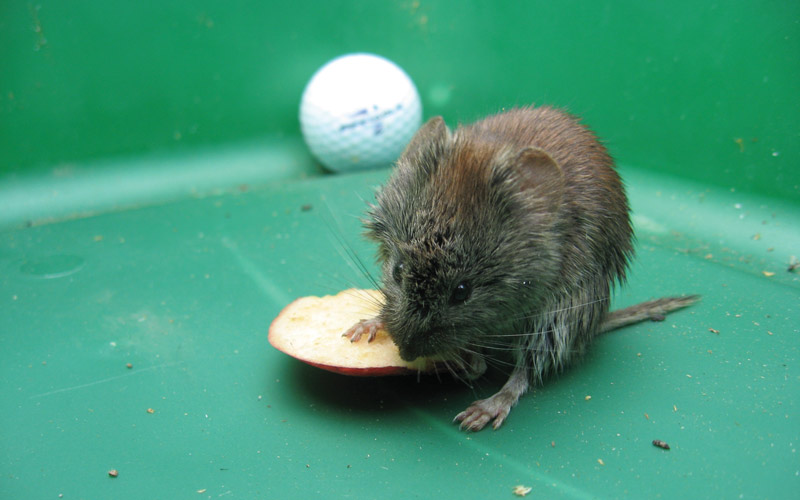Proven Vole Control Methods to Protect Your Property
Proven Vole Control Methods to Protect Your Property
Blog Article
Comprehensive Guide to Reliable Vole Parasite Control: Invasion Recognition and Treatment Methods
In the world of efficient insect control, vole infestations posture a special challenge that requires a tactical approach. These little rodents, often incorrect for mice, can damage yards, lawns, and plants if left untreated. Determining the indicators of vole presence and executing targeted treatment approaches are important components of a successful pest monitoring plan. By discovering the subtleties of vole actions, comprehending essential indicators of problem, and reviewing a series of control options, one can develop a comprehensive method to fight these elusive parasites.
Recognizing Vole Actions
Vole behavior is characterized by their burrowing habits and rapid reproduction rates, making them a challenging insect to regulate properly. These tiny rats generally produce intricate tunnel systems underground, using them for shelter, food storage space, and transport. Voles are herbivores, taking in a selection of plants, origins, grasses, and light bulbs, which can create substantial damages to gardens, orchards, and lawns. Their quick reproductive rate further makes complex control initiatives, with females with the ability of generating several trashes in a solitary year, each having numerous children.
Voles are most active during the early morning and evening hours, investing most of their time foraging for food. Their delving routines not only disturb grass and yards yet additionally make them challenging to identify and get rid of. Understanding vole habits is vital for effective bug control approaches. By recognizing their burrow locations, checking feeding locations, and implementing targeted control techniques, such as capturing or habitat adjustment, vole problems can be managed effectively.
Indications of Vole Problem

Prevention Strategies
Executing efficient avoidance approaches is essential in reducing vole invasions and guarding plant life from their destructive feeding practices. To avoid vole infestations, it is crucial to begin by removing possible food resources and sanctuary.
On a regular basis inspecting the home for signs of vole task, such as runways and tunnel openings, is crucial for very early discovery and timely action. vole pest control If vole task is suspected, take into consideration making use of catches or repellents strategically put near their paths.
Non-Lethal Control Methods
To successfully manage vole populaces while focusing on humane methods, non-lethal control methods use functional services for reducing vole damages in yards and landscapes. These obstacles can be hidden at least 12 inches deep and curved at a 90-degree angle to avoid voles from burrowing below.

Lethal Control Options
One effective approach for dealing with vole problems in gardens and landscapes entails the tactical usage of deadly control choices. When faced with an extreme vole infestation that non-lethal techniques have fallen short to consist of, implementing deadly control actions becomes vital. One frequently utilized deadly control alternative is the use of breeze catches. These catches are made to quickly and humanely kill voles upon activation, making them a preferred choice for numerous garden enthusiasts and landscapers. To raise the effectiveness of snap traps, it is advised to put them in areas where vole task is high, such as along paths or near burrow entries. One more lethal control alternative is the usage of poisonous lures specifically formulated to target voles. These baits consist of poisonous substance that is consumed by the voles, resulting in their ultimate demise. Care must be worked out when making use of toxic baits to protect against injury to non-target animals or animals. In general, when using dangerous control options, it is important to do so properly and based on regional policies to efficiently handle vole problems.
Conclusion
Finally, efficient vole parasite control needs a comprehensive understanding of vole actions, recognition of signs of problem, implementation of prevention techniques, and usage of both dangerous and non-lethal control methods. By incorporating these approaches, people can effectively take care of vole populations and shield their building from damages. It is important to resolve vole infestations immediately to prevent additional issues and reduce the impact on the surrounding environment.
Provided the complex passage systems and rapid reproduction rates particular of voles, identifying the signs of vole infestation comes to be important in efficient bug control. One of the key indications of vole presence is the presence of surface area runways or trails in lawn or snow, commonly regarding 1-2 inches broad, produced as voles travel in between their burrows and food sources.To efficiently handle vole populations while prioritizing humane techniques, non-lethal control methods provide practical services for decreasing vole damage in gardens and landscapes.One effective method for attending to vole invasions in landscapes and gardens involves the strategic use of deadly control choices. vole lawn damage.In conclusion, efficient vole bug control needs an extensive understanding of vole behavior, recognition of signs of invasion, execution of prevention methods, and use of both non-lethal and deadly control methods
Report this page